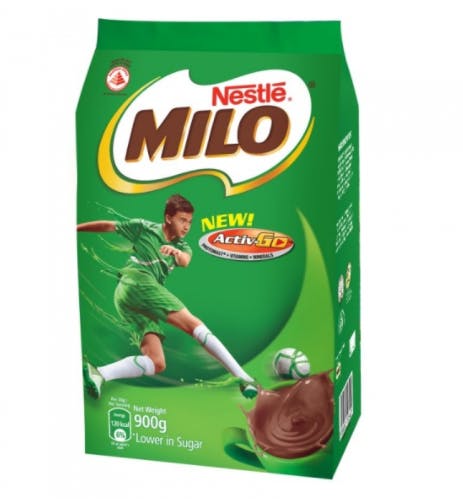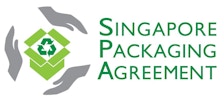If you’ve ever dug endlessly through a box of packing peanuts or unwrapped innumerable layers of packaging to get to the item that you purchased, you’re not alone.
In 2017, packaging materials made up one third of the 1.67 million tonnes of domestic waste disposed of in Singapore—enough to fill up more than 1,000 Olympic-size swimming pools.
Globally, plastic packaging makes up 26 per cent of all plastics used, but only 14 per cent of it is collected for recycling, according to The New Plastics Economy – Rethinking the Future of Plastics, a 2016 report by the World Economic Forum, McKinsey & Company consultancy and Ellen MacArthur Foundation charity.
“In 2013, industries put 78 million tonnes of plastic packaging on the market. Plastic packaging volumes are expected to continue their strong growth, doubling within 15 years and more than quadrupling by 2050, to 318 million tonnes annually—more than the entire plastics industry today,” according to the report’s authors.
Plastic makes up about a half of the material found in consumer goods packaging, with the rest made from paper, aluminium and glass, and its use is expected to soar as demand for packaged goods grows.
Over the next five years, 40 per cent of growth in the consumption of consumer packaged goods globally will come from just five countries in Asia—China, Thailand, Indonesia, India and Singapore—as the middle classes in these countries booms, according to a report on the future of commerce by IPOS and Accenture.
Singapore unboxes packaging strategy
In Singapore, companies have been taking steps to reduce their usage of packaging materials as part of their efforts under the Singapore Packaging Agreement (SPA), a decade long initiative by the National Environment Agency (NEA) and the industry to tackle packaging waste.
More than 200 companies have signed the SPA, and made the commitment to reduce packaging waste from consumer products and the supply chain. Since the launch of the SPA in 2007, the signatories have cumulatively reduced close to 39,000 tonnes of packaging waste, with cumulative savings of about S$93 million in the material costs of locally consumed products.
“
The way we design our packaging and choose our materials can greatly reduce the impact of packaging on the planet.
Lisa Chua, strategic sourcing manager, Hewlett Packard Enterprise Singapore
Rethinking packaging
Many firms in Singapore have found that simple packaging tweaks can have a big impact on a company’s packaging footprint and boost its bottom-line.

The new 900g Milo packaging slashed 30 tonnes of plastic laminate per year
When Nestlé Singapore shortened its Milo drink powder packages, it averted the annual use of about 30 tonnes of plastic laminate. The company also switched from a smaller capacity woven bag to store tapioca starch to a larger flexible intermediate bulk container (FIBC), diverting 163.8 tonnes of packaging waste from the incinerator annually, and made savings on waste disposal costs.
By making the plastic packaging of its glutinous rice balls and roti prata products thinner, Chinatown Food Corporation lowered its consumption of packaging materials by 8.4 tonnes annually and saved $36,000 each year.
In the technology sphere, Hewlett Packard Enterprise (HPE), which is regionally headquartered in Singapore, implemented a slew of measures to shrink its packaging footprint. For one product line, it halved the amount of plastic protective foam used per delivery box from 7.2 kg to 3.4 kg and now uses recycled foam instead of virgin foam.
For three other product lines, it replaced the low-density polyethylene foam cushions used to protect items with either air-filled cushions or lighter cushions made of polyethylene and polystyrene. The company is also considering switching the plastic foam used for another product line with moulded pulp made of recycled paper.
Lisa Chua, a strategic sourcing manager at HPE, tells Eco-Business: “The changes in the four products’ packaging helped us to slash our plastic use by 235 tonnes per year and save more than US$1.5 million (S$2 million) each year. By reducing the amount of packaging on our products, we’ve also cut back on the energy used to transport them.”
The review of their packaging practices also resulted in US$8,000 in annual savings on corrugated cardboard across all four products.
“The way we design our packaging and choose our materials can greatly reduce the impact of packaging on the planet,” she says.
Consumer goods conglomerates have also re-examined their products’ packaging. In 2016, Unilever Singapore relaunched its Sunsilk shampoos and hair conditioners with lighter bottles. The firm estimated that the weight reduction would help it avoid 4.28 tonnes of plastic packaging waste each year and saved around $122,000 annually.
Procter & Gamble (P&G) reengineered its Dawn Ultra Dishwashing Liquid, which is sold as Joy Ultra Dishwashing Liquid in Asia, and saved 25,000 tonnes of plastic each year simply by making the liquid more concentrated. “The concentrated formula reduces the number of bottles that consumers use, because they can get through more dishes with less liquid,” says Celine Bouquet, the company’s Asia Pacific sustainability manager.
P&G also unveiled its shampoo bottles made with up to 25 percent recycled plastic for its Head & Shoulders brand in January 2017, which helped the brand net a United Nations Momentum For Change Lighthouse Activity Award.
“We’ve made progress in reducing our plastic packaging through these and other changes. In line with our long-term environmental goals, we will continue to look for ways to reduce packaging per consumer use, increase our use of recycled resin in plastic packaging and ensure our packaging is recyclable,” says Bouquet.
Making the right choice
The drive to reduce packaging waste, however, also rests on consumer action.
By opting not to purchase products with excessive packaging, or by giving feedback to firms and asking for less packaging, customers could nudge companies into making positive changes.

SPA’s Logo for Products with Reduced Packaging
In Singapore, consumers can also support products which bear the Logo for Products with Reduced Packaging (LPRP) – a voluntary eco-label which identifies products which have undergone improvements by SPA signatories to reduce the amount of packaging materials used.
Most packaging materials, if they are not contaminated by food, can also be recycled. Recycling bins are readily available in residential estates in Singapore where people can deposit glass, paper, plastic and metal recyclables.
Each and every one of us has a role to play in reducing packaging waste. As noted by Singapore’s Senior Minister of State for the Environment and Water Resources, Dr Amy Khor, in her speech at the Committee of Supply Debate 2018: “We are stewards of our environment, preserving and enhancing it for our ourselves and for future generations, just as our forefathers have done for us. We hope that what we do collectively helps reverse the global tragedy of the commons, and ensures Singapore’s development remains on a sustainable path. No action is too small or inconsequential.”





















